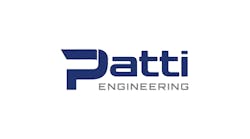TO HELP THEIR clients, members, and constituents, many government departments and trade associations have been simultaneously developing guidance and standards for improving network security. Several industry observers say there are presently about 40 government, trade, and corporate organizations developing network security standards, and that 38 of these groups had been unaware of similar projects by the others. Many of them now are trying to coordinate and consolidate their standards work.
Perhaps the largest standards effort is being carried out by the U.S. Dept. of Homeland Security and the National Institute of Standards and Technology with help from Idaho National Laboratories and Sandia National Laboratories, which jointly offer the National SCADA Test Bed to check products for vulnerabilities.
DHS and NIST also have established the Process Control Systems Forum and the Process Control Security Requirements Forum (PCSRF) to gather input on security needs and best practices, which could be included in future security standards.
Other guidelines and standards are being drafted by ISA’s SP99 committee, the North American Electric Reliability Council, the SANS Institute, and the Chemical Sector Cyber Security Program.
DHS and NIST also are affiliated with the U.S. Computer Emergency Readiness Team and its Control System Security Program (CSSP), which lists control systems incidents, and helps users work with suppliers to resolve disputes involving control system vulnerabilities.
To help all the standards efforts join forces, NIST is compiling all available network security guidelines from the 40 bodies, and reportedly plans to publish them as its 800-53 draft standard in 2007. This coordination is expected to help these organizations decide the security needs they have in common and the methods they can share, and also which aspects of security might be unique to their users and organizations.
For example, NERC’s newly adopted Critical Infrastructure Protection (CIP) standards, CIP-002-1 to 009-1, reportedly can be adopted, altered if needed, and adhered to by users in applications outside NERC’s jurisdiction because they both use computer systems and software in the same way. These commonalities are expected to direct efforts on creating a unified set of network security standards. NERC’s standards cover critical cyber asset identification, security management controls, personnel and training, electronic security perimeters, physical security of critical cyber assets, system security management, incident reporting and response planning, and recovery plans for critical cyber assets.



